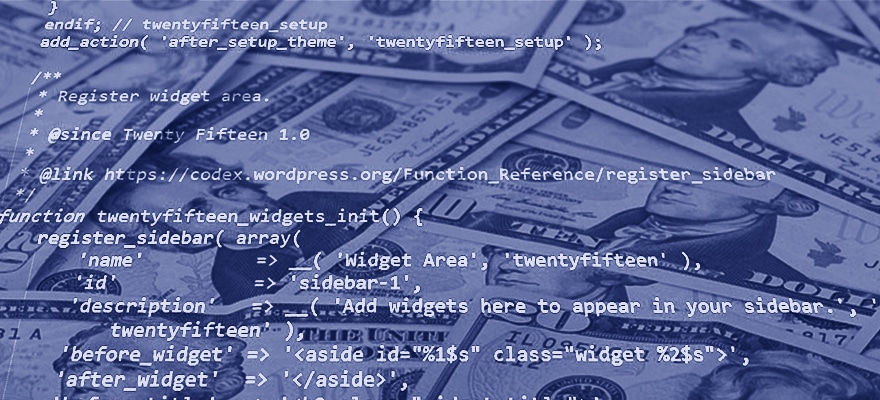Today, when cash moves much faster and electronic money transfers are routinely used by millions, an invisible war is wagered by traditional service providers and innovative peer-to-peer operators. The latter are fighting an uphill battle to unseat the current elite, while banks and money transfer giants such as MoneyGram and Western Union are clinging to their dominant position. They’ve got the numbers, the expertise and the political support, but nothing can indefinitely stop the advancements of technology.
Who are the peer-to-peer money transfer services?

Author of the article: Julius Mantel
TransferWise, Azimo and CurrencyFair are just a few of the important players in this highly competitive industry of peer-to-peer money transfer services. They operate on a global scale, but each of them actually focuses on a couple of countries and uses the Internet as a springboard to new markets.
The very essence of peer-to-peer money transfers makes them reliant on a dedicated group of customers. Most peer-to-peer money transfer services were founded in the years following the financial crisis of 2008, cashing in on the fading confidence in the banks.
There is an indissoluble link between the size of the customer base and the commissions they charge, as they require a balanced community. Peer-to-peer money transfer services are matching people who send money in one direction with the ones transferring the funds in the opposite way.
This makes it possible for them to greatly reduce the costs of exchange rates that have been for decades a major source of income for banks and traditional service providers.
Who are the money transfer giants that have dominated the market so far?
Over decades, banks and independent money transfer services such as MoneyGram and Western Union divided the money transfer market among themselves.
MoneyGram is one of the leading traditional service providers, with a history that spans over several decades and a structure that covers tens of thousands of offices worldwide. Their popularity grew in the years following the Second World War and they are a giant compared to peer-to-peer money transfer services. MoneyGram moves billions of dollars annually, but even these numbers pale in comparison to the ones Western Union can brag about.
The American behemoth was founded back in 1851 and for 164 straight years, it had no true competitor, while also offering business Payments and commercial services. Western Union is currently transferring a staggering amount of $80 billion on a yearly basis and it makes a lot of money by charging pretty steep fees. Many are disguised in the exchange rates, and with people from hundreds of countries hooked on their service, Western Union is truly a global player with almost half a million agent locations.
How big is the market for international money transfer?
Globalization is a catalyst for international money transfers and the global market is huge, with hundreds of millions of dollars transferred each day. According to the Peer-To-Peer Payment Report from BI Intelligence, the global market for peer-to-peer transfers and remittances is worth well over $1 trillion. To put things into perspective, an ambitious peer-to-peer money transfer service such as TransferWise shifts more than $1 billion of customers’ money each year.
Azimo and CurrencyFair are posting similar numbers and even though they are nowhere near Western Union and MoneyGram, they’ve got a huge potential to grow. When you operate in such a huge market, even a small slice can result in a lot of money, and peer-to-peer money services are only going upward.
How much of the market share have the peer-to-peer money transfer services already taken away from the traditional service providers?
One doesn’t need to be a math whiz to realize that the leading peer-to-peer money transfer services still amount to less than 5% of all the international money transfers. They are not within striking distance of Western Union and MoneyGram and won’t close the huge gap separating them over the next couple of years. On the bright side, the wheels are set in motion and the fact that a newly founded company such as TransferWise has already crossed the psychological threshold of $1 billion per year is encouraging.
How big of a threat are the peer-to-peer money transfer services for the traditional service providers?
We live in a brave new world and the Internet is truly the final frontier for financial transactions, an environment in which peer-to-peer money transfer services are experts. Mobile devices are used more often than ever before for financial transactions and companies such as WorldRemit cashed in on the high rate of smartphones adoption. The company has more than 100 million customers, with most of them residing in African countries where mobile money is gaining a lot of traction.
Meanwhile, Azimo operates in almost 200 countries and offers customized services, such as home deliveries, while running a massive 270,000 cash pick up locations. Until recently, people had no alternative for transferring money abroad and had to accept the high fees that often exceed 5%. They wised up and peer-to-peer money transfer services are providing an inexpensive alternative.
Which peer-to-peer service provider could threaten the banks and independent money transfer giants the most?
For the time being, no peer-to-peer service providers can be singled out as a real threat for banks and giant money transfer companies. Western Union and MoneyGram are fighting a war on multiple fronts, challenged all over the world by companies like TransferWise, Azimo and CurrencyFair but also Cryptocurrencies such as Bitcoin.
Can the peer-to-peer services dominate the market in the future or will they always stay a niche market?
Banks and independent money transfer giants have reigned supreme for decades, but their obsolete business model is dying out. The time is ticking and no matter the changes they hastily implement to make money transfers more convenient while cutting down on fees and commissions, it is simply too late.
In this rigid and highly competitive environment, massive changes don’t occur overnight, but peer-to-peer services will eventually dominate the market for the benefit of us all.
This article was written by Julius Mantel who is an experienced management consultant and entrepreneur who has worked with numerous national and international companies throughout the world. In his blog posts, he covers the challenges of today’s entrepreneurs, the impact of FinTech and other disruptive technologies, such as 3D printing, on entire industries, and much more.

















